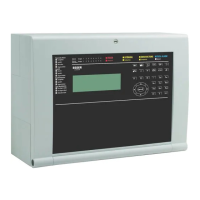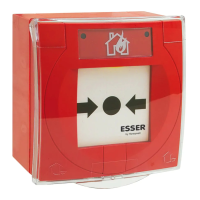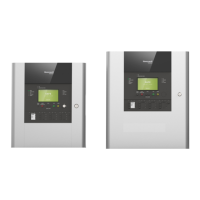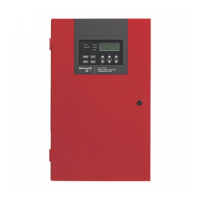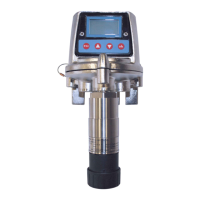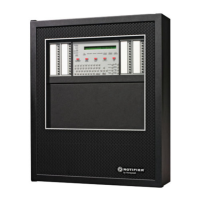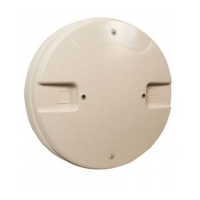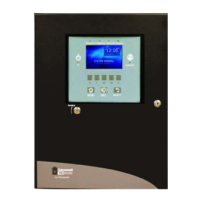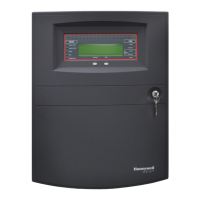Periphery components for ESSER FACP
TI 798960.GB0 / 04.20 65
10.1 Requirements
• The sound pressure level of the surroundings in which an audible alarm device is to be installed must be
measured.
• The sound pressure level of the alarm device must be at least 65 dB and must be +10 dB higher at all
locations than the sound pressure level that was measured for the surroundings. If necessary, several alarm
devices may have to be planned.
• The sound pressure level of the signal tone (e.g. DIN tone) that is also going to be used later for alarm
output in these surroundings, must also be measured.
• The signal tone must be clearly audible above the background noise. In case of similar frequencies, a
different signal tone must be chosen and/or the alarm must be signalled with an additional optical alarm
device.
In accordance with DIN 33404-3, an alarm signal and/or signal template for alarms (e.g. comprising
signal tone + voice output) must always begin with the DIN tone. Then a voice message may be
• If possible, the audible alarm devices should be configured in control zones with a low control zone number.
Low control zone numbers are activated quicker than high control zone numbers. Relay/LED outputs should
have higher control zone numbers than alarm devices. As many loop activations as possible should be
assigned to a control zone.
• Synchronisation is carried out at all esserbus
®
PLus modules that are operated on a FACP.
• The gap between the synchronisation signals must be coordinated with the signal templates that were
aggregated in the tools 8000 programming software (e.g. consisting of signal tone + voice output).
• If an alarm device is replaced with the device, all the activations are transferred. If an alarm device is
replaced by a device from another zone, all activations are deleted, including the activations in the sectors.
10.2 Project planning information
10.2.1 IQ8Quad with integrated alarm devices
The sound pressure levels for IQ8Quad with integrated alarm devices and IQ8Alarm Plus in accordance with
EN 54-3 are set out in the following tables.
Sound pressure level (SPL) [dB(A)]
Tone Description
2
Frequency 800 Hz/970 Hz @ 2 Hz
(based on FP 1063.1 Telecoms BS
81 84 84 84 83 81 84 83 85 85 83 85
7
Frequency 970 Hz
83 85 87 88 85 82 86 86 88 89 86 85
10
Frequency 1200 ... 500 Hz @ 1 Hz,
DIN tone in accordance with DIN 33404-
84 84 88 88 83 83 84 84 86 87 83 82
11
Frequency 554 Hz @/440 Hz
(based on French fire sound)
81 84 87 89 84 80 81 84 85 86 83 80
12
Frequency 500 Hz ... 1200 Hz
(based on NL - Slow Whoop)
86 86 88 87 85 84 85 86 87 87 85 84
13
Frequency 485 Hz
77 74 80 82 77 76 79 75 82 82 78 78
14
Frequency 485 Hz (based on US Horn
75 72 78 82 77 73 78 75 82 82 78 81
